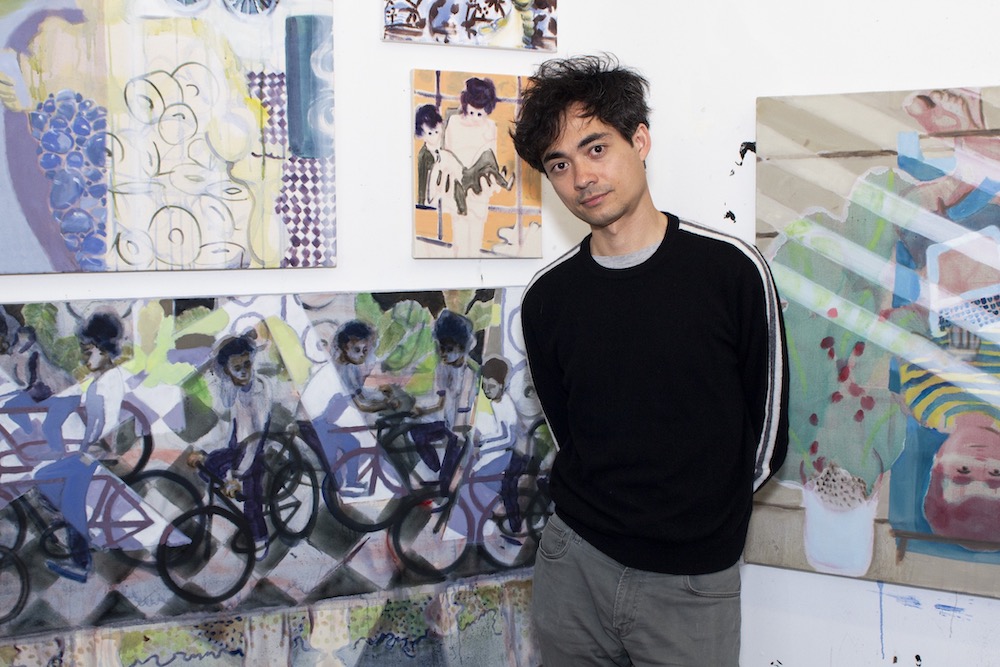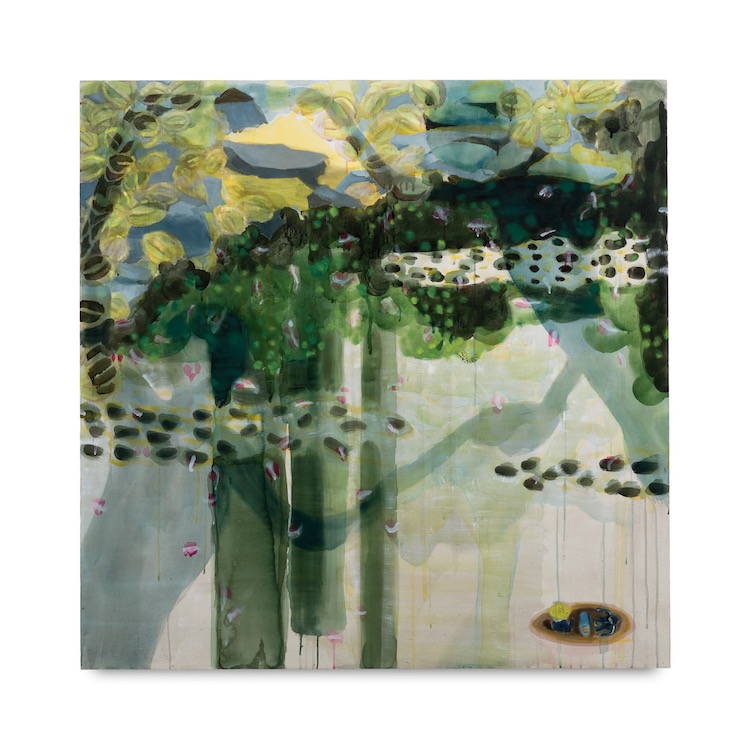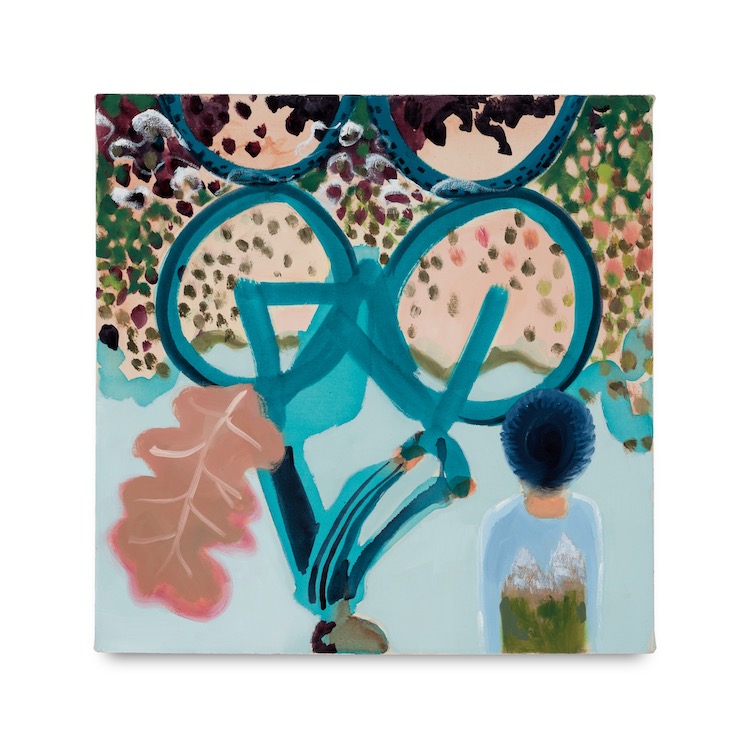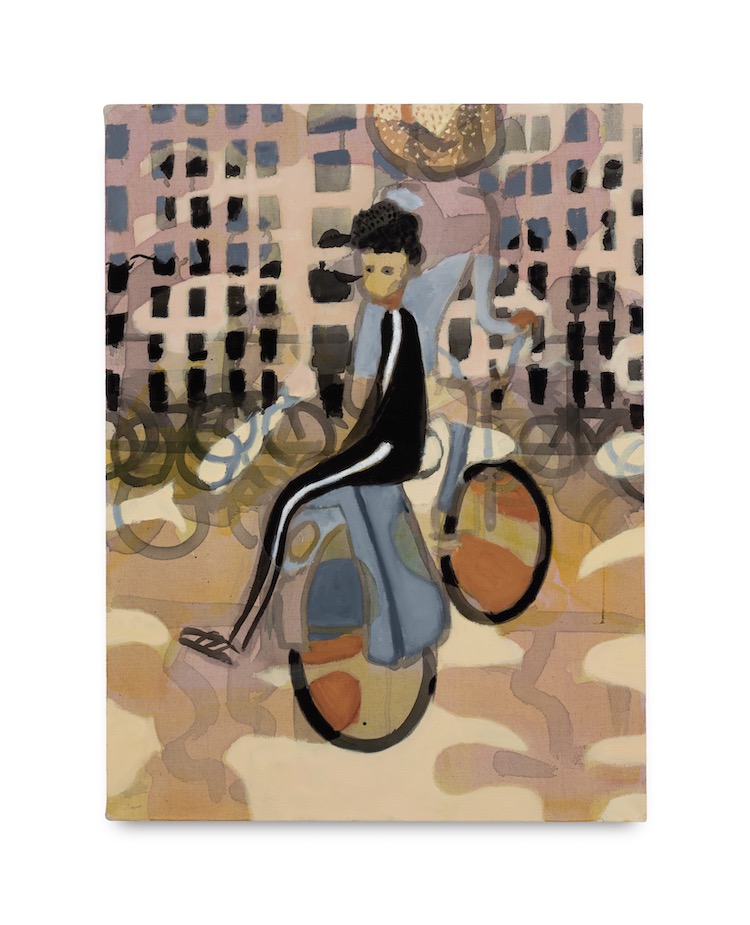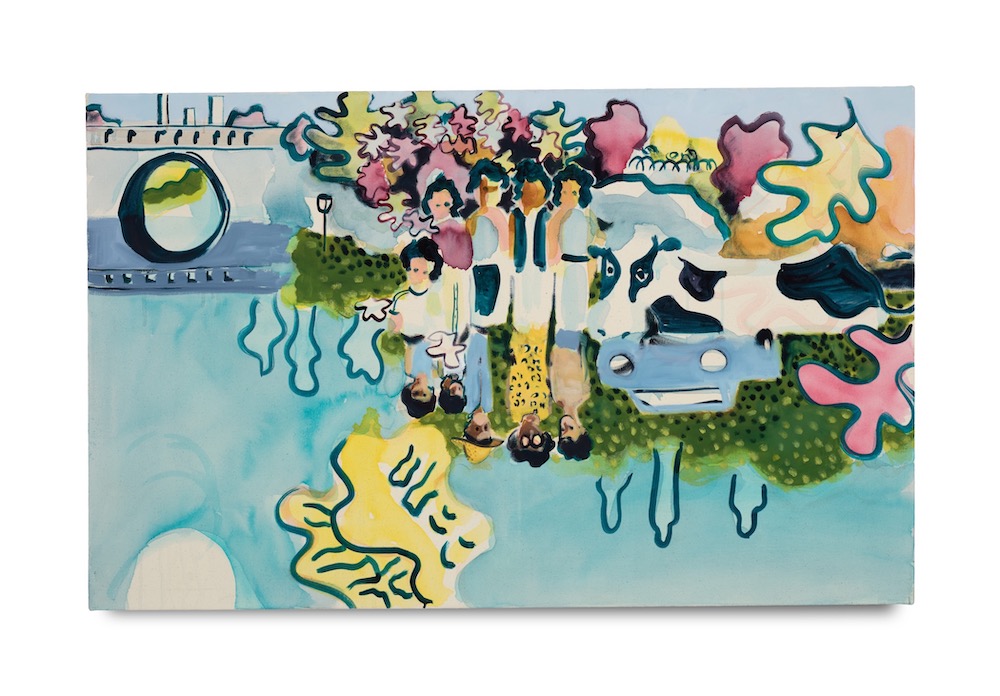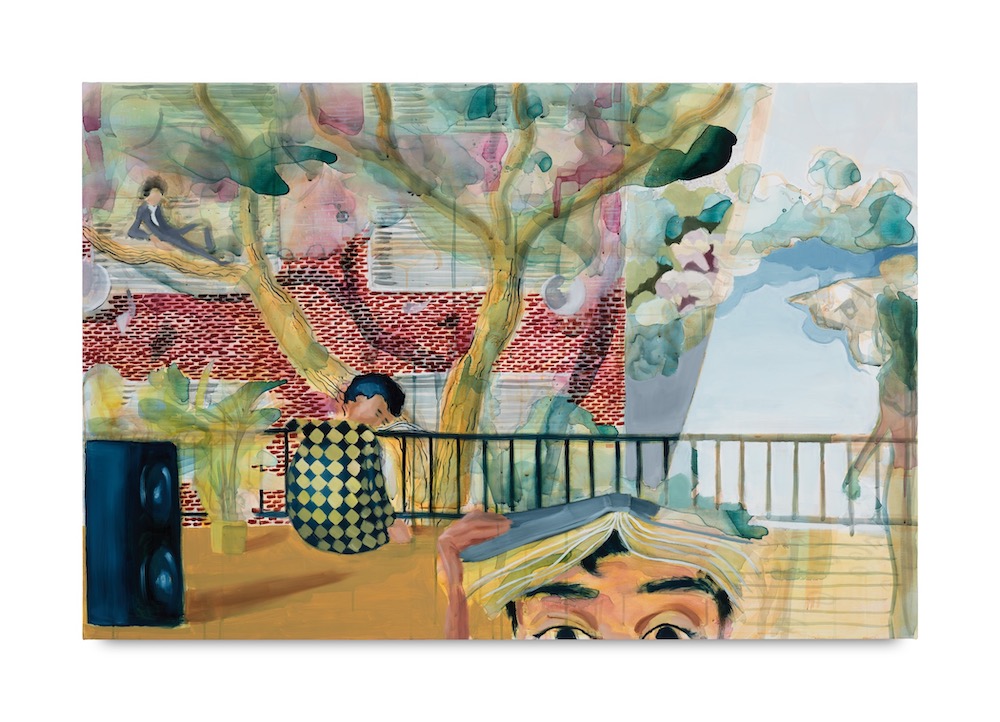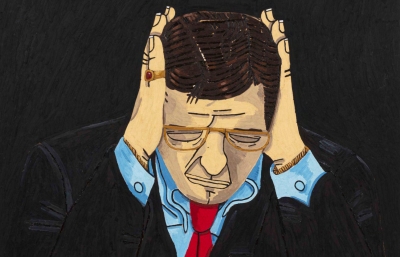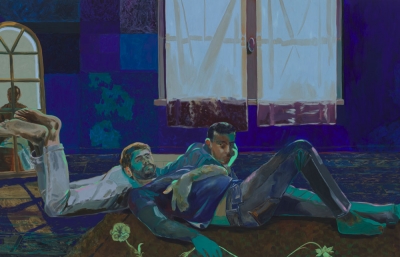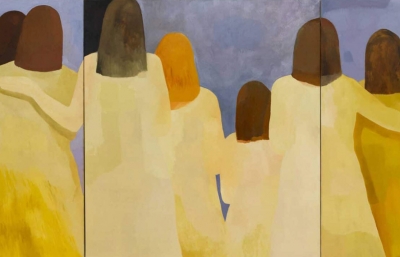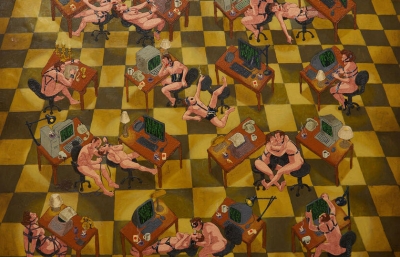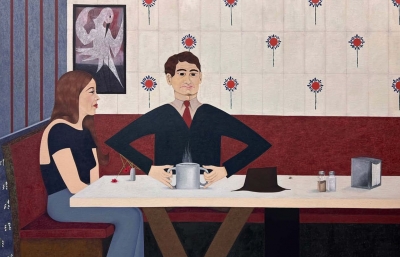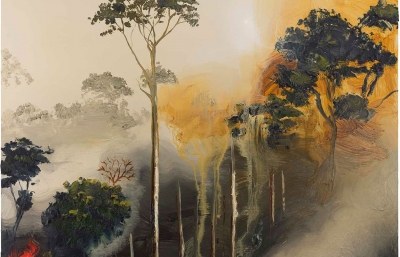There are virtually infinite ways in which one can examine and/or talk about the complexity of the human condition and for many that involves speaking about their history, heritage, and the sense of belonging. In a world in which the concept of nation states is becoming rapidly outdated and often obstructing or complicating, we tend to resort to our past experiences to find the connection with present time events. And for Miko Veldkamp, this includes making dreamy scenes that blend those memories in colourful amalgamations of softened visuals.
It's a well known fact that our experiences shape our personality, our character, and inform who we are. Layered on top of each other, the memories and emotions relating to personally significant events are continuously interchanging, giving place to each other and conditioning the way we think, the way we act. So it makes sense that the Surinam-born Dutch-Indonesian painter would develop a technique in which he combines and intertwines those, creating a poetic, continuously updated representations of his journey to date. This is how the lush, tropical scenery from Veldkamp's Caribbean native country is interwoven with such Dutch archetypes as bicycle or red brick walls for example. And in between those, are scenes of family life, friendship, joy, solitude, shown dissolving in fluctuating memory through the use of muted hues of vibrant tropic colours and an uninhibited and agile brush work. Overlapping and interacting with each other, the semi-translucent patterns, figures, and their surroundings construct entirely new, borderline fantastic or surreal pictures which describe complex representations of life's most defining moments.
And a few days ahead of Veldkamp's first UK solo show at Workplace gallery's East London location which opens on Saturday 22nd January we've got in touch with the artist to discuss these enchanting yet puzzling visuals.
Sasha Bogojev: What type of elements are crucial in your work and how do you employ them?
Miko Veldkamp: I use a lot of psychological metaphors, like shadows, mirrors, being submerged etc, but I use them as ways of exploring cultural relations, history and my own shifting identity from place to place. It complicates ideas of internal and external, both spiritual and spacial. And my self-portrait interacts with different versions of himself and different surroundings.
Was there any recurring metaphor or idea that was used in this particular series of work?
A recurring idea is the nightclub, as a metaphor for exclusive spaces like nation states, but also being a place where one performs who they are. For this body of work, I started using fluorescent colors as a kind of neon lit space (much like a night club), and also earth tones as a contrast to that.
Other recurring ideas are: shadows as if projected on the canvas or from the back like shadow puppets, tracksuits, bicycles, cows or cow print, chequered floors and orange soils.
Besides your own memories, are there other elements that you're frequently using in your work and where are they coming from?
I use references to Dutch or European art and stereotypical Dutch or European things in my work. Although I grew up in The Netherlands and feel Dutch, I was born in Surinam and lived there during my early childhood. Therefore, it has always been up for debate in my surroundings whether I'm Dutch or not. Perhaps now even more than ever. Yet I feel that I have a right to be. Ironically, my Dutch-ness and European-ness is less questioned in the United States. It's as if here, I finally get to be Dutch/European. I like that identity is not a stable or singular thing. It shifts, it's layered and it's dependent on your environment.
What is the significance of your studio practice and the ability to recreate your experiences for you personally?
An important part of my practice is journaling. I call it journaling because it's daily and ongoing and most of the notes are written. There are just some small drawings of details or thumbnail size compositions. It helps me remember ideas and observations. I'm afraid they might slip away from me otherwise.
How much of your work is pre-planned with these small drawings?
When I start a painting I don't have a fixed idea. Sometimes I hardly have an idea at all. I just start with some abstract compositions, space or figures interacting with each other. I like to think of what I'm going to make while I work on a painting, maybe sleep on it or just do my best guess, freely associating with what's there. That way the painting reminds me of things from my own life and things from art history simultaneously and I invent from there. It becomes a dialogue between art history and my own history.
Is this body of work different in any ways from you've worked on previously?
With this body of work, I've gotten good at adding a lot of narrative in paintings as I was building it up, and then finding relations, and editing as I go. Erasing and adding. Working like this has helped me find meaning and know what is important. 
What attracts you to using watered out hues, almost transparent strokes, and the general soft feel of your imagery?
I started doing glazes around a year ago. With glazing you stack translucent layers of paint on top of eachother. Every layer needs to be dry before the next one goes over it. I used to paint my paintings really fast to create a kind of flow, but I like that glazing slows me down. The slowing down has influenced my thought process, as overnight thinking becomes more a part of the work. There are different momentums in a painting now. I can be very anxious in the studio and the slow process of glazing actually suits me really well.
I also like to think of translucency as this thing that is everywhere around us: seeing through foliage, how a shadow is a translucent film on a surface, or how there is always an atmosphere. Realizing this dramatically changed how I saw my work and my surroundings. I came to it by reading Joseph Albers' Interaction of Color, which was recommended to me at Hunter College in the same week by both Chie Fueki and Aaron Gilbert coincidentally.
Did your recent personal shift towards becoming a father influence your practice or this particular body of work in any ways?
I'm not sure how being a father or having a baby around will influence my work. A lot of my figures become self-portraits first and then I change them to other people. I like the idea that when working that way, the closer someone is to me and the more they look like me the more likely they are to appear in my work. So we see my mother, my brother and family members a lot. Ada might be there pretty soon.
Did you already incorporate her in any of the work?
I was making this show while Kate was pregnant, and wanted to have it finished by the time the baby was due but Ada was 12 days early. I was in the studio working on Koi Pond Spirits when it happened. A week or so later, as an homage to that, I painted us three in the little boat in the bottom right corner of that painting.
Knowing the work to date I'm pretty certain she will find her way into the work. Any idea what sort of scenarios she might be associated with?
I have been playing with ideas of genius and naive, civilised and primitive. Ada is 100% dependent on the world around her. She's born in the same year that the super wealthy became astronauts. I think going to space is seen as the highest possible achievement, but astronauts are very similar to babies in that they're super dependent on their surroundings and other people. It totally undercuts the idea of individual achievement. Ada reminds me of an astronaut a lot, when she’s in a car seat for instance. I think we always stay 100% dependent on our environment. Not sure if I'll ever use this connection between babies and astronauts but if I do, you've heard it here first.
Ghost Stories will be on view at Workplace in London from January 22—March 6, 2022. Work photos by Tom Carter, profile photo by Néstor Daniel Pérez-Molière. All photos courtesy of the artist and Workplace, UK

